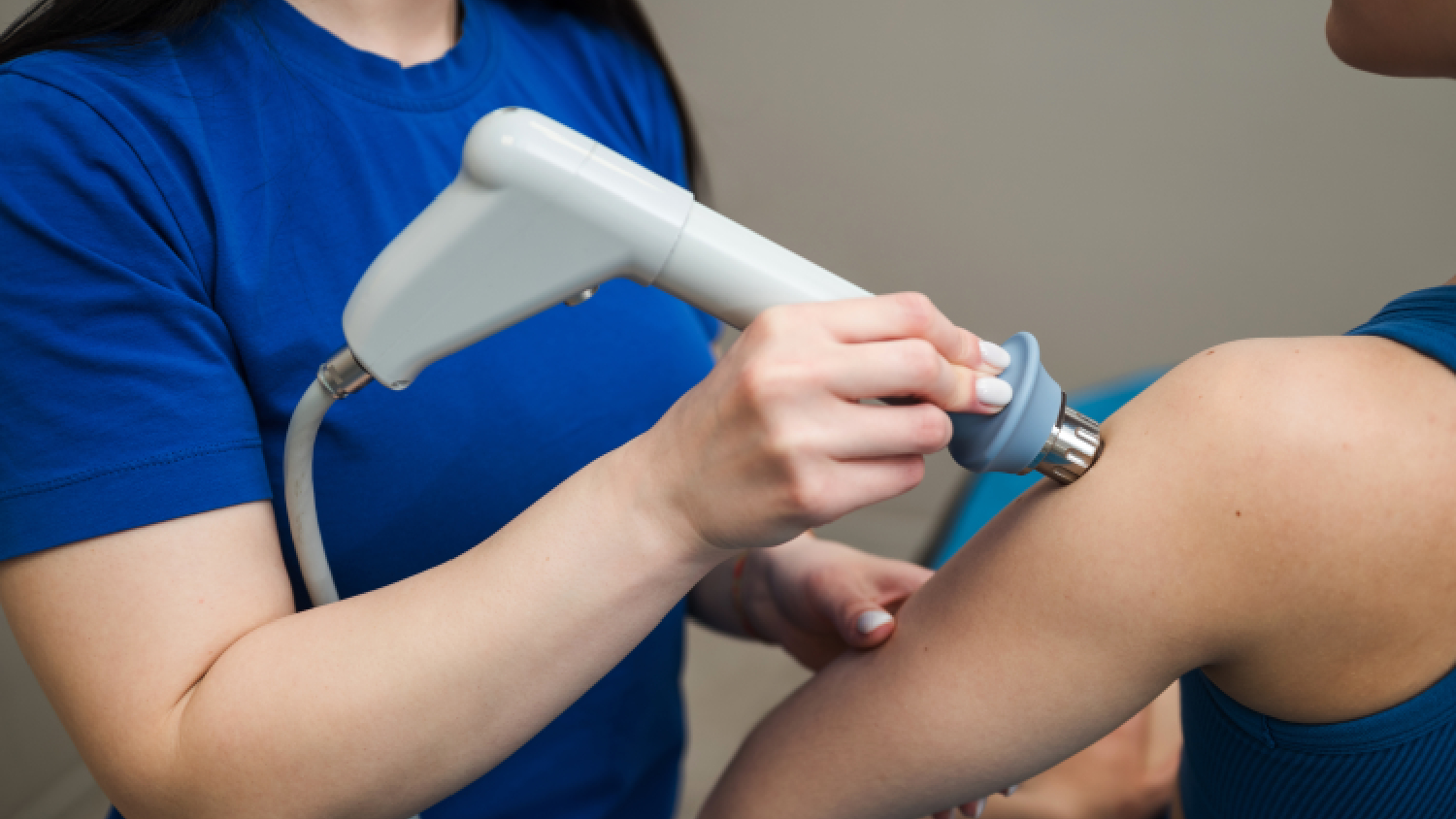Synopsis
Shoulder discomfort can arise from various sources, making a precise diagnosis and tailored therapeutic plan crucial for effective recovery. Expert physiotherapy for rotator cuff injury is vital for restoring stability and power to the shoulder complex after tendon damage. This article explores focused protocols for physio for shoulder bursitis, which aims to reduce inflammation and impingement through mobilization and posture correction. For persistent stiffness, specialized physiotherapy for frozen shoulder protocols are necessary to gradually restore the capsule’s range of motion. Finding the right shoulder physio is the first step toward a customized plan, ensuring that all aspects of physio for rotator cuff rehabilitation are managed. We also detail how targeted physio for shoulder pain techniques can accelerate relief and functional return. Consistent physiotherapy for rotator cuff injury prevents chronic instability. Expert physio for shoulder bursitis care incorporates modalities to manage inflammation. Meticulous physiotherapy for frozen shoulder is essential for regaining mobility. A dedicated shoulder physio ensures safe, progressive exercises. Specialized physio for rotator cuff protocols maximize tendon healing. Targeted physio for shoulder pain provides symptomatic relief. Comprehensive physiotherapy for rotator cuff injury is key to restoring power. Trusting expert physio for shoulder bursitis care accelerates the resolution of impingement. Dedicated physiotherapy for frozen shoulder and focused physio for rotator cuff programs are essential for a full recovery, proving the value of a professional shoulder physio and committed physio for shoulder pain regimen.
Table of Contents
- Understanding the Common Shoulder Culprits- Tendons and Bursae
- Dedicated Physiotherapy for Rotator Cuff Injury- The Healing Protocol
- Specialized Physio for Rotator Cuff- Progressive Strengthening
- Expert Physio for Shoulder Bursitis- Decompression and Inflammation Control
- Addressing Chronic Stiffness- Physiotherapy for Frozen Shoulder
- The Integrated Role of the Shoulder Physio and Physio for Shoulder Pain Relief
- Long-Term Stability- Why Structural Correction is Key
- The Orthocure Advantage- Integrated Multi-Disciplinary Shoulder Care
- Partnering with Orthocure for Complete Shoulder Function
Understanding the Common Shoulder Culprits- Tendons and Bursae
The shoulder’s immense range of motion makes it susceptible to injury, often centered on the rotator cuff tendons or the subacromial bursa. A rotator cuff injury involves damage to one or more of the four tendons that stabilize the humerus (upper arm bone), leading to weakness and pain, particularly during overhead activities. Shoulder bursitis, on the other hand, is the inflammation of the bursa, a fluid-filled sac that cushions the tendons, usually caused by impingement (pinching) under the acromion bone. Both conditions are major sources of physio for shoulder pain and require precise therapeutic intervention. An accurate diagnosis is paramount because while both cause similar symptoms, the healing and strengthening protocols differ significantly, necessitating specialized care.
Dedicated Physiotherapy for Rotator Cuff Injury- The Healing Protocol
Effective physiotherapy for rotator cuff injury is a phased approach essential for tendon healing and functional restoration. Initially, the focus is on pain control and protecting the damaged tendon from further strain, using modalities and gentle, pain-free range-of-motion exercises. The critical second phase, guided by a specialist in physio for rotator cuff , involves progressive, controlled strengthening. This regimen is designed to build the endurance and power of the tendon complex, ensuring the shoulder joint is stable during movement. Consistency in these prescribed exercises is the most vital factor in preventing chronic instability and avoiding the need for surgical repair, making physiotherapy for rotator cuff injury the gold standard non-surgical management.
Specialized Physio for Rotator Cuff- Progressive Strengthening
The progressive strengthening program is the cornerstone of successful physio for rotator cuff rehabilitation. The specialist employs specific, low-load exercises—often involving resistance bands or light weights—to isolate the individual rotator cuff muscles (supraspinatus, infraspinatus, teres minor, and subscapularis). This targeted approach ensures that power and control are restored, which is essential for the long-term integrity of the shoulder. A key component of successful physio for rotator cuff care is addressing the scapular (shoulder blade) stabilizers, as a weak scapula forces the rotator cuff to work harder, accelerating tendon wear and contributing to chronic physio for shoulder pain .
What is the role of eccentric exercise in rotator cuff recovery?
Expert Physio for Shoulder Bursitis- Decompression and Inflammation Control
Specialized physio for shoulder bursitis focuses on two primary goals: reducing acute inflammation of the bursa and resolving the mechanical impingement that caused it. Initial treatment involves modalities like ice, ultrasound, or laser therapy to calm the irritated bursa. Crucially, the long-term protocol for physio for shoulder bursitis shifts to corrective exercise designed to improve posture and shoulder mechanics. By strengthening the lower trapezius and serratus anterior muscles, the therapist ensures the shoulder blade moves optimally, creating more space in the subacromial region and decompressing the bursa, thereby preventing future painful pinching.
Addressing Chronic Stiffness- Physiotherapy for Frozen Shoulder
For cases complicated by chronic stiffness, often seen in adhesive capsulitis, dedicated physiotherapy for frozen shoulder protocols become necessary. This condition demands a different approach than tendonitis or bursitis. The aim of physiotherapy for frozen shoulder is to gradually restore the range of motion by gently stretching the constricted joint capsule through sustained mobilization techniques. This phase is meticulously guided by the shoulder physio to prevent aggressive movement, which can inflame the shoulder further. Once mobility is regained, the focus shifts to strengthening the supporting muscles to maintain the newfound range, ensuring the patient achieves a full, functional recovery.
How does frozen shoulder treatment differ from bursitis treatment?
The Integrated Role of the Shoulder Physio and Physio for Shoulder Pain Relief
The shoulder physio is the cornerstone of effective treatment, serving as the expert guide throughout the rehabilitation process. This specialist’s role is not just about executing techniques but also accurately diagnosing the primary source of the patient’s physio for shoulder pain —whether it is the tendon, the bursa, the capsule, or a nerve—and prescribing a plan that integrates manual therapy, postural correction, and specific exercise. A certified shoulder physio provides the necessary structural correction and patient education, empowering the patient to manage their joint health long after the clinical sessions are complete, providing durable physio for shoulder pain relief.
Long-Term Stability- Why Structural Correction is Key
True long-term stability for conditions like physio for shoulder bursitis and physiotherapy for rotator cuff injury depends entirely on structural correction. If the underlying postural and movement faults that caused the injury are not addressed, the pain will inevitably return. This involves strengthening the upper back and core muscles to support a neutral spine and teaching proper lifting and reaching mechanics. This focus on fixing the root biomechanical issues sets specialized care apart, guaranteeing a durable solution and preventing the chronic cycle of injury and temporary relief that plagues individuals with unresolved shoulder conditions.
What postural faults contribute most to shoulder impingement?
The Orthocure Advantage- Integrated Multi-Disciplinary Shoulder Care
ORTHOCURE CLINICS AND GYMS delivers integrated, protocol-driven care for complex shoulder conditions. Our unique 4 Point Protocol ensures that every patient, whether requiring specialized physio for rotator cuff care or meticulous physiotherapy for frozen shoulder management, receives standardized, root-cause focused treatment. We integrate Orthopaedic Doctors, dedicated Physiotherapists, and Chiropractors to manage complex cases collaboratively. This means utilizing advanced technologies, including the MedX, USA machines, which are vital for precisely testing and strengthening the small stabilizing muscles of the shoulder, guaranteeing the most effective path to overcoming chronic physiotherapy for rotator cuff injury and restoring full function.
How does Orthocure’s team collaboration benefit complex shoulder cases?
Partnering with Orthocure for Complete Shoulder Function
The services offered by ORTHOCURE CLINICS AND GYMS provide a complete pathway to long-term wellness. We offer the most advanced physio for shoulder bursitis and physio for shoulder pain solutions, extending from acute pain management to specialized OrthoFIT/FitX40 strength conditioning. Our ultimate USP is the commitment to Structural Correction through an integrated, evidence-based approach. By choosing ORTHOCURE, you gain a partner dedicated to restoring your full range of motion and power, ensuring you confidently return to a life of unrestricted movement.
What recovery statistics does Orthocure follow for shoulder physio?
FAQs
How does dedicated physiotherapy for rotator cuff injury help prevent the need for surgery?
Dedicated physiotherapy for rotator cuff injury is highly effective in preventing surgery by focusing on controlled, progressive tendon loading and strengthening the entire shoulder complex. The specialist uses specific eccentric exercises to promote the healing and alignment of the tendon fibers, rebuilding resilience and power without invasive procedures. This structured approach, overseen by a certified shoulder physio, ensures the tendon is strong enough to stabilize the joint during movement, ultimately eliminating the instability and pain that might otherwise necessitate surgical intervention. This non-surgical path is the preferred gold standard for most partial tendon tears.
What is the main goal of physio for shoulder bursitis and how is it achieved?
The main goal of physio for shoulder bursitis is to reduce acute inflammation and prevent the chronic impingement that caused the bursa to become irritated. It is achieved by combining anti-inflammatory modalities with structural correction. The therapist focuses on manual therapy to restore joint mechanics and prescribes exercises to strengthen the muscles that correctly position the shoulder blade (scapular stabilizers). By improving posture and movement mechanics, the shoulder physio creates more space in the subacromial area, thereby decompressing the bursa and providing long-term relief from physio for shoulder pain.
What techniques are used in physiotherapy for frozen shoulder to restore range of motion?
Techniques used in physiotherapy for frozen shoulder focus on gradually and safely stretching the severely constricted joint capsule to restore range of motion. This involves specialized, sustained manual joint mobilizations, often paired with heat therapy to increase tissue extensibility. The therapist is meticulous in progressing the intensity based on the patient’s pain tolerance, avoiding any aggressive movements that could cause inflammation. This systematic process, known as frozen shoulder physio treatment, is crucial for overcoming the stiffness and regaining functional capacity in the shoulder.
How does expert physio for rotator cuff care address the issue of muscle weakness and instability?
Expert physio for rotator cuff care addresses muscle weakness and instability by implementing highly targeted strengthening programs that isolate the four rotator cuff muscles and the key scapular stabilizers. These exercises, prescribed by a shoulder physio, are low-load initially and progress to functional resistance to rebuild muscle endurance and power. This focused approach ensures that the forces stabilizing the shoulder are optimally balanced, which is vital for preventing the instability and compensatory strain that contribute to chronic pain and re-injury, proving essential for effective physiotherapy for rotator cuff injury.
When should a patient choose specialized frozen shoulder physio treatment over a general approach for pain?
A patient should choose specialized frozen shoulder physio treatment when their pain is accompanied by a severe, progressive restriction in both active and passive range of motion. General physio for shoulder pain may not be sufficient as it focuses primarily on muscle issues, whereas frozen shoulder requires specific techniques to stretch the joint capsule itself. This specialized, phased frozen shoulder physio treatment is critical for navigating the condition safely and restoring mobility, ensuring the patient receives the necessary advanced care for this unique, complex condition.
What are the long-term benefits of a successful physio for shoulder bursitis treatment?
The long-term benefits of a successful physio for shoulder bursitis treatment include not only the complete resolution of the inflammation and pain but also structural changes that prevent recurrence. By correcting the underlying postural and scapular muscle imbalances, the treatment eliminates the mechanical impingement that irritates the bursa. This structural correction provides durable relief from physio for shoulder pain and reduces the risk of developing secondary conditions like tendonitis, ensuring the patient can maintain overhead activities without fear of the bursitis returning.
How does the shoulder physio help patients manage chronic physio for shoulder pain effectively at home?
The shoulder physio helps patients manage chronic physio for shoulder pain effectively at home by providing comprehensive education on ergonomics, posture, and a personalized maintenance exercise regimen. This includes teaching proper lifting mechanics, instructing on self-release techniques for muscle tension, and prescribing a set of routine strengthening exercises. This empowerment for self-management is crucial for sustaining the structural correction achieved in the clinic, allowing the patient to actively prevent flare-ups and maintain the functional gains achieved through their dedicated rehabilitation program.





